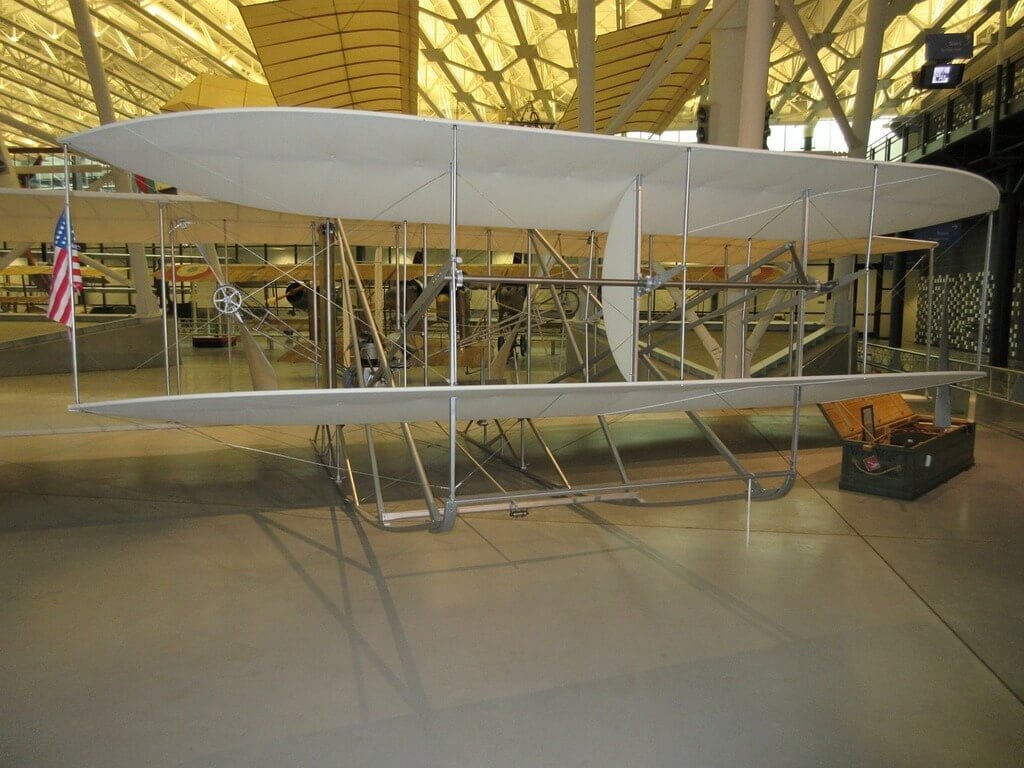In the annals of aviation history, the Wright Brothers stand as titans, having achieved a milestone that forever altered the course of human transportation. Their first successful powered flight marked the birth of modern aviation, heralding an era of progress and innovation. Let’s delve into the captivating story of Wilbur and Orville Wright, exploring the circumstances leading up to that historic moment and the impact it had on the world.

The Road To Aviation: Wright Brothers Facts
Before delving into the groundbreaking flight itself, it’s essential to understand the backdrop against which the Wright Brothers’ journey unfolded. Wilbur and Orville Wright, born in 1867 and 1871 respectively, were two brothers with a shared passion for flight. Their fascination with aeronautics ignited during childhood, fueled by their experiences with kites and gliders.
These Wright brothers facts reveal that their aviation journey wasn’t an overnight success. Instead, it was a gradual and persistent pursuit of a dream that many deemed impossible. Their early experiments involved building and testing gliders, a crucial phase that laid the groundwork for their eventual powered flight.
The Genesis Of Powered Flight
The turning point in the Wright Brothers’ quest came with their decision to shift from gliders to powered flight. Armed with their newfound knowledge of aerodynamics, the brothers began constructing their first powered aircraft, aptly named the Wright Flyer. The year that would change the course of history was 1903.
On December 17, 1903, at Kill Devil Hills, near Kitty Hawk, North Carolina, the Wright Brothers achieved what had been deemed impossible for centuries – sustained, controlled flight in a powered aircraft. The historic flight lasted a mere 12 seconds, covering a distance of 120 feet. While seemingly modest by today’s standards, this achievement was nothing short of miraculous in its time.
The Wright Brothers’ Aircraft: A Closer Look
To truly appreciate the significance of the Wright Brothers’ first powered flight, it’s crucial to understand the intricacies of their aircraft. The Wright Flyer, designed and built by Wilbur and Orville, was a biplane with a wingspan of 40 feet, and 4 inches. The aircraft featured a 12.3-horsepower engine, a testament to the brothers’ ingenuity in engineering.
One of the interesting Wright Brothers facts is that they built the engine themselves, showcasing not only their prowess in aeronautics but also their understanding of mechanical engineering. The aircraft’s wings, constructed with spruce wood and fabric, were meticulously designed to provide the necessary lift and control for sustained flight.
The Historic Day: December 17, 1903
As the sun rose over the sandy dunes of Kill Devil Hills on that fateful December day, the Wright Brothers prepared for what would become a momentous event in human history. The winds were favorable, and the stage was set for the first powered flight.
At approximately 10:35 a.m., with Wilbur at the controls, the Wright Flyer took to the skies. The aircraft, propelled by the roaring engine, soared above the ground, defying gravity. It was a brief but triumphant journey that would forever change the way humans perceived transportation.
The Impact On Aviation And Beyond
The success of the Wright Brothers’ first powered flight had far-reaching implications that extended beyond the realm of aviation. It sparked a revolution in transportation, opening new possibilities for trade, communication, and exploration. Air travel, once a fantastical notion, became a tangible reality, connecting people and places like never before.

The Wright Brothers’ accomplishments also profoundly impacted science and engineering. Their meticulous approach to understanding aerodynamics and their innovative solutions, such as the three-axis control system, became foundational principles in aeronautical engineering. These principles continue to shape the design of aircraft today.
Legacy And Recognition
The significance of the Wright Brothers’ achievement did not go unnoticed. In the years following their historic flight, they received widespread recognition for their contributions to aviation. Governments, institutions, and fellow inventors acknowledged their groundbreaking work, cementing their place as pioneers in the field.
Despite their success, the Wright Brothers remained humble, focusing on further advancements rather than resting on their laurels. Their commitment to pushing the boundaries of flight laid the groundwork for subsequent generations of aviators and engineers, inspiring a legacy that endures to this day.
Wright Brothers Facts: A Recap
Before we conclude our journey through the annals of aviation history, let’s revisit some key Wright Brothers facts that highlight the significance of their achievement. The brothers’ unwavering dedication to understanding the principles of flight, their meticulous testing of gliders, and the development of the Wright Flyer showcase the depth of their commitment to their dream.
The historic flight on December 17, 1903, is a testament to the brothers’ ingenuity and determination. The aircraft’s design, featuring a custom-built engine and carefully crafted wings, exemplifies their innovative approach to aeronautics. The impact of their achievement extends beyond aviation, influencing science, engineering, and global connectivity.
A Legacy Soaring High
As we reflect on the Wright Brothers’ first successful powered flight, it becomes clear that their contribution to human progress is immeasurable. Their pioneering spirit, resilience in the face of challenges, and relentless pursuit of a dream forever altered the trajectory of transportation.
The Wright Brothers’ legacy continues to soar high, an ever-present inspiration for those who dare to dream and strive for the seemingly impossible. Their journey from childhood dreams to conquering the skies serves as a reminder that innovation, fueled by passion and perseverance, can shape the course of history.
Also Read: When Was The First Camera Invented, And Who Invented It?
